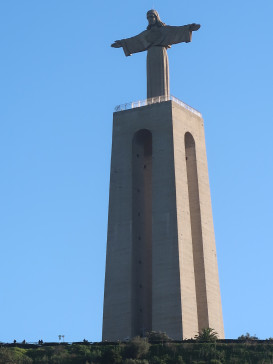Boat tour along the picturesque coast of the city of Lisbon
Praça do Comércio
The name means "square of commerce" and is one of the most famous and popular squares in Portugal. From the River Tejo (Tagus), you have a direct view of the equestrian statue of King Dom José I and, directly behind it, the triumphal arch to the Rua Augusta. The whole is framed by opulent arcades built on the site of the historic royal palace, which was destroyed by an earthquake in 1755. The building is U-shaped and opens out towards the water.
On the right-hand side, as seen from the water, is the beer museum in the arcades, with a wide range of beers on offer. We rested there a few times.
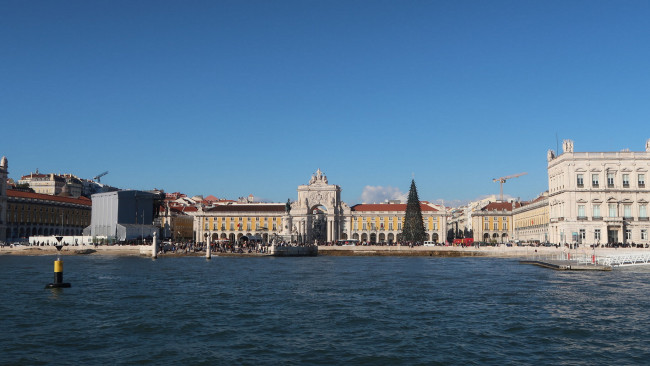
Waterfront landscape
The skyline of Lisbon passes by. The dome in the background belongs to the Basilica de Estrela.
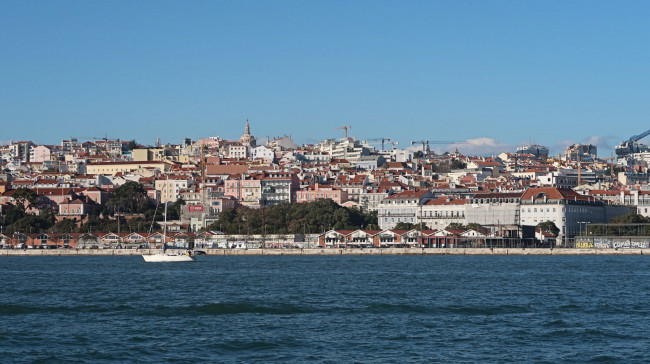
Ponte 25 de Abril
The spectacular suspension bridge over the Tagus, known as the "Ponte", is 2,278 metres long. This makes it the third-largest suspension bridge in the world, over which trains as well as cars can travel. The bridge also extends even further inland, reaching a total length of an impressive 3.2 kilometres.
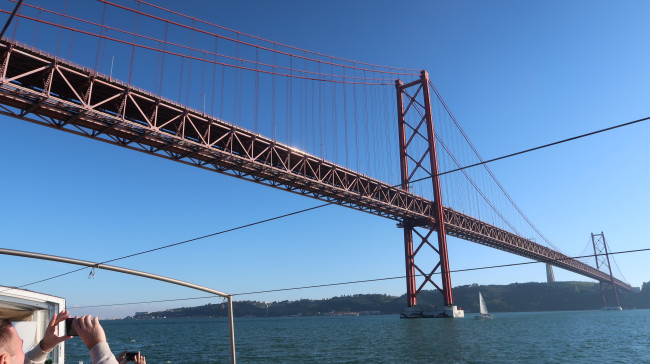
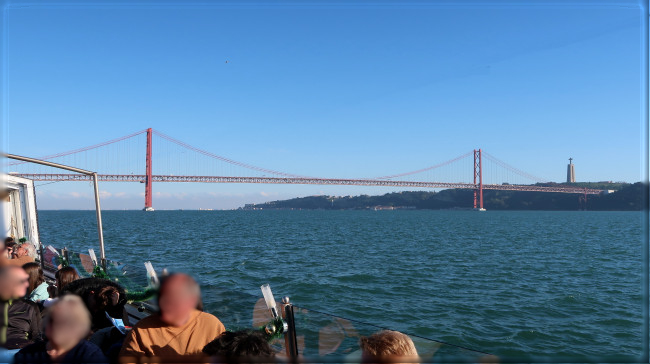
Museum of Art, Architecture and Technology (MAAT)
The futuristic building was opened at the end of 2016 and shows exhibitions by contemporary artists and architects from all over the world. Covering an area of 3,000 square metres, the art gallery also offers space for debates, new discoveries and critical discussions.
Even from the water, the architectural masterpiece is impressive, as the façade with its reflective tiles creates different lighting moods depending on the season and time of day. You could say it is a modern interpretation of the tile art so typical of Lisbon, the azulejos.
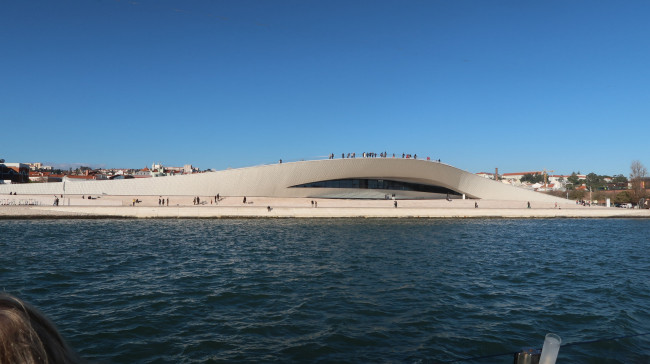
Padrão dos Descobrimentos
The name means in English "Monument of Discoveries" and when you see the monument, you understand where the name comes from. It was erected 500 years after the death of Henry the Navigator in 1960 and has a total height of 56 metres. On the side facing the water is the figure of Prince Henry, who financed numerous voyages of discovery that made Portugal a historic maritime power. However, like an iceberg, only the tip of the building can be seen from the outside: Inside, there is still an auditorium for around 100 people and an exhibition room.
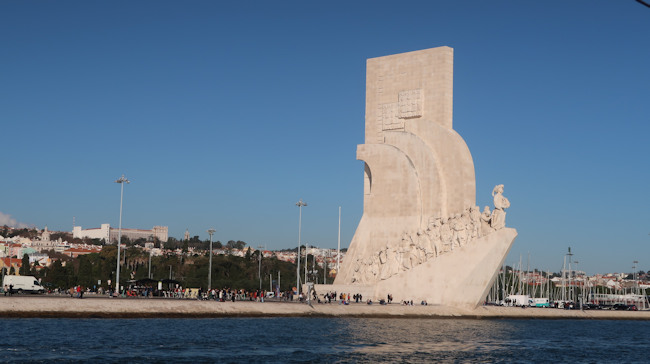
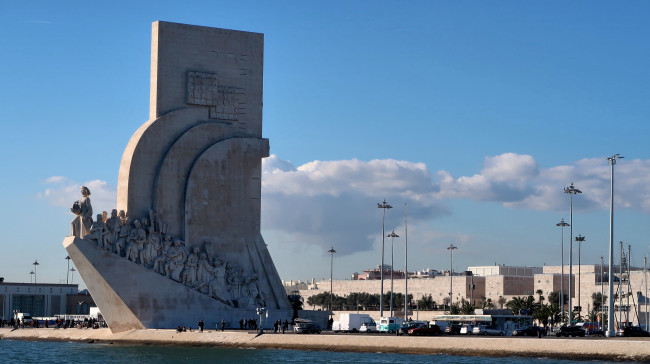
Torre de Belém
The "Tower of Belém", as it is called in English, is one of the most famous sights in Lisbon. You can see the 35 metre high tower from afar and today there is a viewing platform at the top. Unlike its twin tower on the opposite bank, the building survived the earthquake of 1755 and bears the impressive year of birth 1521. The then King Manuel I had it built to emphasise Portugal's importance as a maritime and trading power.
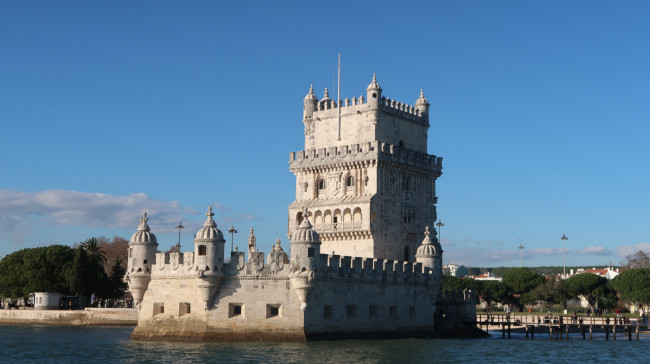
Cristo-Rei Statue
The statue of Christ faces Ponte 25 de Abril and Lisbon with its arms spread wide. The pedestal on which it stands rises an impressive 75 metres into the air, while the figure itself is still a proud 28 metres high. This makes it the seventh highest statue of Christ in the world and a popular vantage point. It can be easily reached by lift from the land. The structure is modelled on the famous statue of Jesus in Rio de Janeiro and was inaugurated in 1959.
